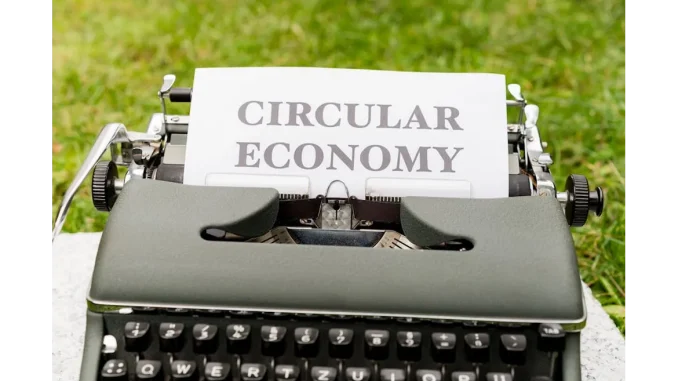
The concept of a circular economy has gained substantial traction in recent years, especially within the realms of urban planning and development. London, a leading global city, has taken a forward-thinking approach by embedding circular economy principles into its planning framework. The “Circular Economy Statement Guidance” published by London City Hall is an exhaustive document that delineates the requirements and expectations for major planning applications referable to the Mayor. This article explores the nuances of this guidance, its objectives, and its implications for sustainable urban development in London.
A circular economy represents an economic model that eliminates waste and continually utilises resources, standing in sharp contrast to the traditional linear economy, which adheres to a ‘take, make, dispose’ model. In a circular economy, resources are kept in circulation for as long as possible, extracting maximum value before recovering and regenerating products and materials at the end of their lifecycle. This model not only aims to minimise waste but also optimises the use of resources, thereby contributing to environmental sustainability.
The London Plan mandates that all major referable planning applications must incorporate a Circular Economy Statement. This statement is a pivotal document that outlines how the proposed development will conform to circular economy principles. It is a mandatory requirement at various stages of the planning process, including pre-application, full application, and post-completion stages. The Circular Economy Statement is meticulously structured, comprising several sections, each serving a distinct purpose.
The title page of the statement should include key information, such as the name of the development, the planning application reference, and whether the statement is a draft or detailed version. It should also list the authors, usually the organisation responsible for its preparation. The executive summary provides a non-technical overview of the circular economy approach and commitments at the current stage of the project. It includes the identities of all organisations involved, a brief description of the development and its context, strategic approaches for different parts of the development, specific commitments that transcend standard practices, and an overall implementation approach.
The description of the development section offers a concise overview, including existing resources on the site, proposed floor areas, the number of residential units, and any new public realm or supporting infrastructure. It also highlights any unique features or site constraints. The method statement summarises the process followed up to the point of submission, including details of meetings and workshops held, key points discussed, and actions taken. This section demonstrates how circular economy principles have influenced the project brief, design, procurement, and construction processes.
Applicants are required to explain their interpretation of the circular economy, its benefits for sustainable development, and their priorities for accelerating the transition. They should link the proposed development to these broader aspirations and highlight any relevant past experiences or notable outcomes. The guidance provides a framework for deciding on strategic approaches to the circular economy, summarised in Table 1 (Appendix A). This involves agreeing on approaches, explaining them with reference to London Plan policy requirements, and identifying the supporting information needed to set and achieve specific targets.
For detailed planning applications, the focus shifts to action and feasibility. Table 2 (Appendix B) prompts applicants to consider the nine circular economy principles for each building layer, covering all lifecycle stages. This table evolves as the design progresses, reflecting the strongest commitments that go beyond standard practice. Applicants must complete a Bill of Materials form to demonstrate resource conservation and sustainable sourcing. This includes estimating the quantity of materials used, their material intensity, and setting targets for recycled content. The goal is to ensure material optimisation and the use of recycled or reused materials wherever possible.
Additionally, a Recycling and Waste Reporting Form must be included, outlining targets for reuse, recycling, and recovery of waste generated during excavation, demolition, construction, and operation. This helps meet specific London Plan targets for managing waste and material streams. The Circular Economy Statement Guidance has far-reaching implications for London’s urban development. By embedding circular economy principles into the planning process, London is setting a new standard for sustainable development. This approach not only reduces waste and resource consumption but also fosters innovation and resilience in the built environment.
Implementing circular economy principles in urban development is not without its challenges. One of the primary challenges is the lack of knowledge and expertise in the industry. Many architects, designers, and builders are still unfamiliar with the concept and its practical applications. Therefore, education and training are crucial to bridge this knowledge gap. On the other hand, the circular economy presents numerous opportunities. It encourages the use of innovative materials and construction techniques, promotes the refurbishment and adaptive reuse of existing buildings, and supports the development of resilient and adaptable urban spaces. Moreover, it aligns with broader sustainability goals, such as reducing carbon emissions and conserving natural resources.
The “Circular Economy Statement Guidance” is a cornerstone document underscoring London’s commitment to sustainable urban development. By mandating the inclusion of circular economy principles in major planning applications, London is leading the way in creating a more sustainable and resilient city. This guidance not only aims to reduce waste and resource consumption but also encourages innovation and sustainable practices in urban development. As London continues to grow and evolve, the Circular Economy Statement will play an instrumental role in shaping a greener and more sustainable future for the city.


Be the first to comment